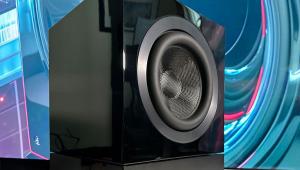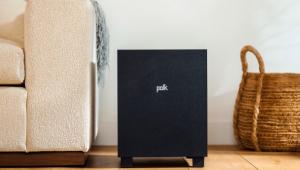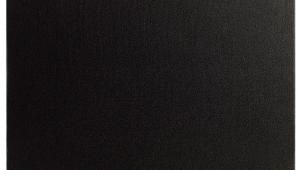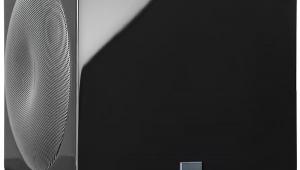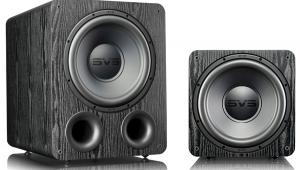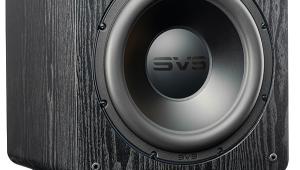Hsu VTF-15H Subwoofer
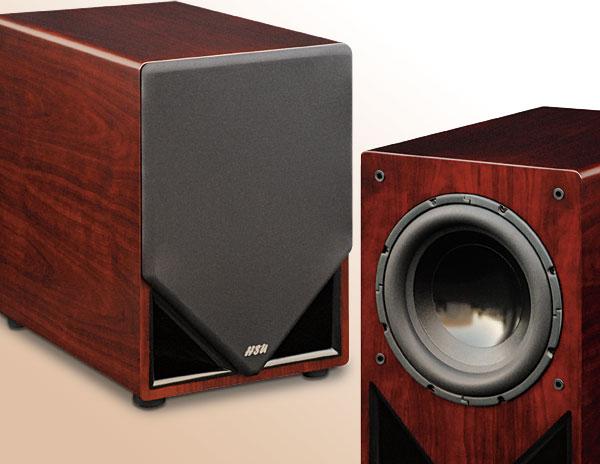
Dr. Poh Ser Hsu designed and sold his first subs around 1991. They were tall, tube-like structures, built from the forms used to pour concrete pillars. The tubes were made of relatively thin fiberboard (roughly 0.125 inches thick), and their cylindrical shape made their walls tremendously strong and resistant to flexure. More important, they were relatively light, which was ideal for Hsu’s direct-from-the-factory sales plan.
While such tubular designs are still available from other vendors, Hsu ultimately transitioned to more conventional flat-sided fiberboard enclosures, which now dominate the company’s extensive subwoofer line.
The VTF-15H is Hsu Research’s newest model. It’s also the biggest, and a remarkable value. You don’t need a lot of jack to add this box to your home theater, even when you include the roughly $1-per-pound shipping cost of this 100-plus-pound monster. I don’t review many subwoofers outside of complete systems, but this one offers so many unique setup options that I couldn’t resist having a look—and a listen.
Totally Not Tubular
Apart from its size, the VTF-15H is little different from other subwoofers in appearance—a squarish (or in this case rectangularish) block in Satin Black. It’s also available in a flawless Rosenut finish for a $120 price upgrade. Rosenut isn’t a real species; it’s another wood veneer that’s been stained to resemble pricey and environmentally
taboo Rosewood.
I had no complaints about the Hsu’s fit and finish, apart from the cardboard spacer ring around the perimeter of the 15-inch driver’s frame. The driver is neither flush-mounted nor trimmed out in a way that would hide this spacer, although I suspect that either solution would add to the price. I’ll take the savings, thank you very much. A sculpted grille hides all of this anyway. I removed it early in the review—audiophile habits never die, nor do they fade away. But unless they rattle, grilles will have virtually no effect on a subwoofer’s sound.
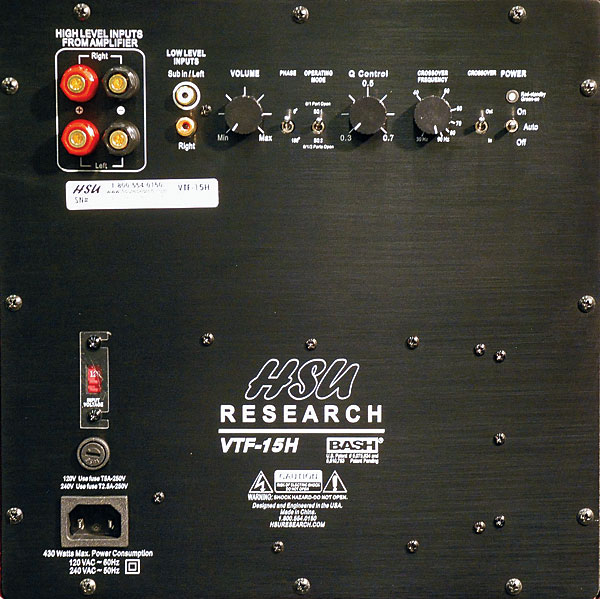
The onboard amplifier is a BASH design with Class A/B output rated at 1,400 short-term watts or 350 watts continuous. Below the driver are two large, triangular ports. You can leave one or both of the ports open, or block them with either or both of the two matching foam bungs that come with the sub. In other words, the VTF-15H can function as either a sealed or ported design. To optimize it for either of these options, there’s a two-position EQ switch on the back panel. There are five modes of operation offering either maximum headroom or maximum extension, depending on how you use the foam bungs and the EQ switch. The only combination that is cautioned against (because it could both damage the driver and void the warranty) is EQ1 with both ports open.
There’s also a Q adjustment with continuous settings from 0.3 to 0.7. A system’s Q alters its damping, but it can also affect its frequency response. The lower the Q, the faster the rolloff and the less chance of a peak in the response; too low a Q can sound anemic or lean and dry. Manufacturers often err on the high side, as fatter bass sells better. Mass-market speakers with a Q of 1.0 or more, with their maximum bass peaking somewhere between 50 hertz and 100 Hz, aren’t uncommon.
In addition, the VTF-15H provides most of the prosaic features found in most modern subwoofers: speaker- and line-level inputs, an on/auto/off switch (auto turns the sub on or off depending on the bass content it receives), a two-position phase switch, and of course, the ever-popular volume control.
Hsu products also come with a 30-day, money-back guarantee to make sure you’re satisfied (although you’ll be out the two-way shipping costs). Somehow I doubt they get many returns.
The Subwoofer Hokey Pokey
Locating full-range speakers where they provide the best soundstage imaging in your room—or even the place demanded by the location of your HDTV or projection screen—may not (and in most cases will not) be the best place for them
to generate their best bass response. A subwoofer offers a way around this problem. You
can position it independently
of where the main speakers
work best—or where they must be placed.

How you choose to set up the Hsu’s variables—ported or unported, EQ1 or EQ2, and Q setting—will depend on your taste, your room, and the locations of your main speakers, the subwoofer, and the listener. You can’t determine the best mix of these often competing variables beforehand. It takes experimentation with placement to get the best from any subwoofer.
Hsu’s own published curves (hsuresearch.com) indicate that the one-port, max-extension mode has a –3-decibel point of around 18 Hz with a Q of 0.7, with useful response below that. I slightly preferred a Q of 0.5, although the difference between 0.5 and 0.7 was subtle at best. Even at 0.5, I confirmed on test tones that there was audible output in my room as low as 12.5 Hz, although at a very low, almost subliminal level. The output at 16 Hz was strong enough to generate a mighty wind of port noise.
I ultimately located the Hsu with the driver facing to the side, roughly behind the center speaker and about 1 foot from the wall behind it. I also preferred the sealed maximum-extension mode, with a Q of 0.5. Hsu’s curves indicate that the sub’s response in this mode, with the Q set to 0.7, will have a –3-dB point of 28 Hz (independent of the room). In my room in this mode, with the Q set to 0.5, a 25-Hz tone was loud and clear, a 20-Hz tone was less so but still unmistakable, and a 16-Hz tone was barely audible.
The remainder of the speakers in the system were Revel Concertas: the F12 floorstanders left and right, the C12 center, and the S12 surrounds—a high-value package that has been the lowest-priced system in Revel’s lineup for several years.
Way, Way Down Deep
Do you need a good subwoofer for basic two-channel listening? Before I got cranking in 5.1 or more channels, I wanted to address this question. But
it’s complicated.
The Revel F12, which has two 8-inch woofers, does a remarkable job in the bass on its own. Measurements have shown that it has some added plumpness in the low end, but when positioned well away from adjoining walls, as it was in my room, the bass is strong and relatively tight down to 40 Hz or slightly lower. Its low-frequency power handling is good as well (even a small bookshelf speaker can respond down to 40 Hz, but will overload at that frequency far sooner than the F12 as the level increases).



